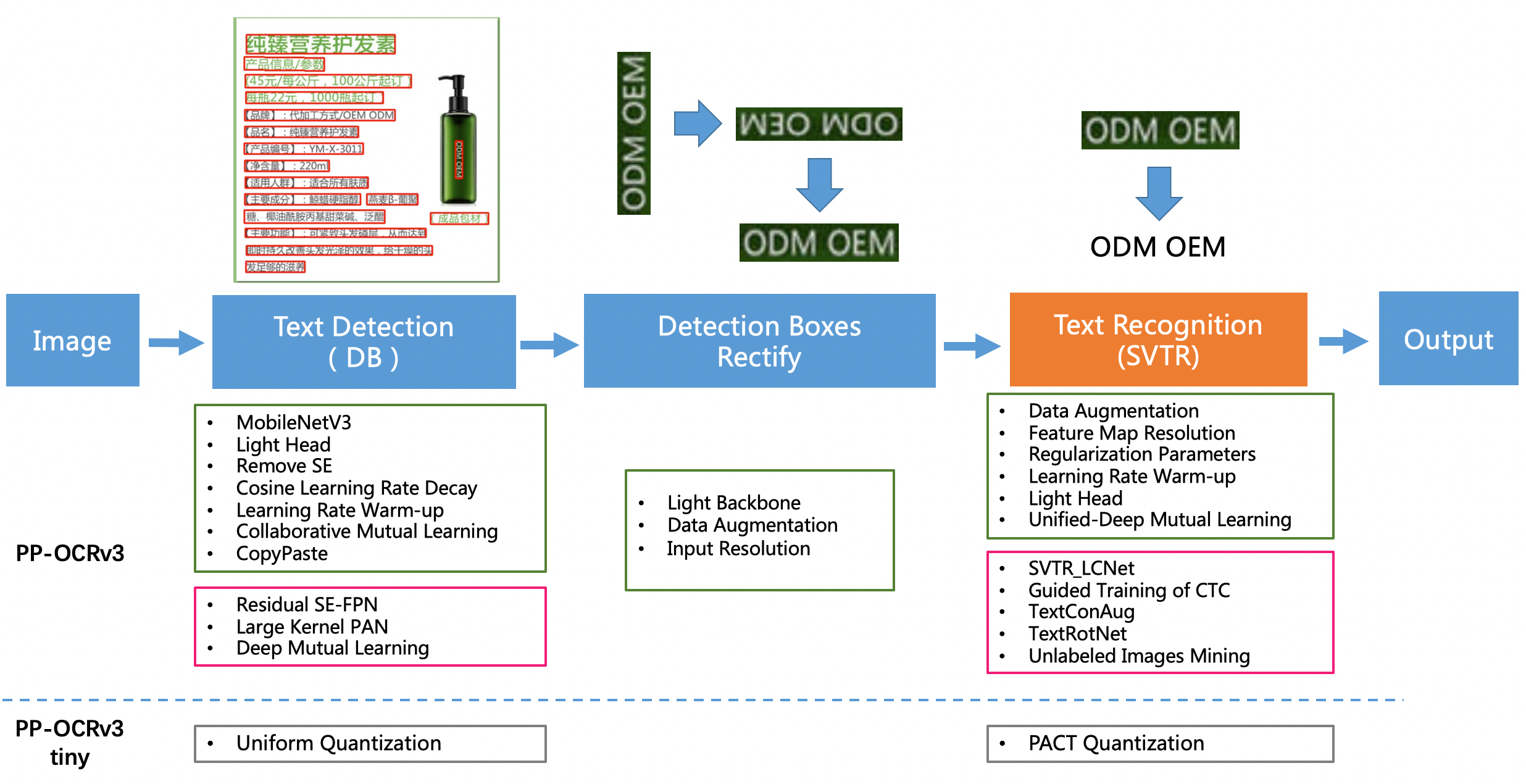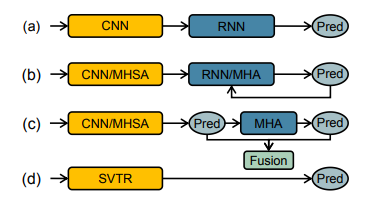SVTR: Scene Text Recognition with a Single Visual Model
constiution: Baidu Inc., Fudan University, China
conference: IJCAI 2022
github: https://github.com/PaddlePaddle/PaddleOCR
reference: https://arxiv.org/pdf/2205.00159v2.pdf
PP-OCRv3
Introduction: PP-OCRv3, proposed by PaddleOCR team, is further upgraded on the basis of PP-OCRv2. The overall framework of PP-OCRv3 is same as that of PP-OCRv2. The base model of recognition network is replaced from CRNN to SVTR, which is recorded in IJCAI 2022.
There are 9 optimization strategies for text detection and recognition models in PP-OCRv3, which are as follows.
In terms of effect, when the speed is comparable, the accuracy of various scenes is greatly improved:
- In Chinese scenarios, PP-OCRv3 outperforms PP-OCRv2 by more than 5%.
- In English scenarios, PP-OCRv3 outperforms PP-OCRv2 by more than 11%.
- In multi-language scenarios, models for more than 80 languages are optimized, the average accuracy is increased by more than 5%.
Abstract
- In this study, we propose a Single Visual model for Scene Text recognition within the patch-wise image tokenization framework, which dispenses with the
sequential modelingentirely. - The method, termed SVTR, firstly decomposes an image text into small patches named character components.
- Global and local mixing blocks are devised to perceive the inter-character and intra-character patterns, leading to a multi-grained character component perception. Thus, characters are recognized by a simple linear prediction.
Figure 1:
(a) CNN-RNN based models.
(b) Encoder-Decoder models. MHSA and MHA denote multi-head self-attention and multihead attention, respectively.
(c) Vision-Language models. (e.g. SRN, ABINet)
(d) Our SVTR, which recognizes scene text with a single visual model and enjoys efficient, accurate and cross-lingual versatile.
Method
Overall Architecture
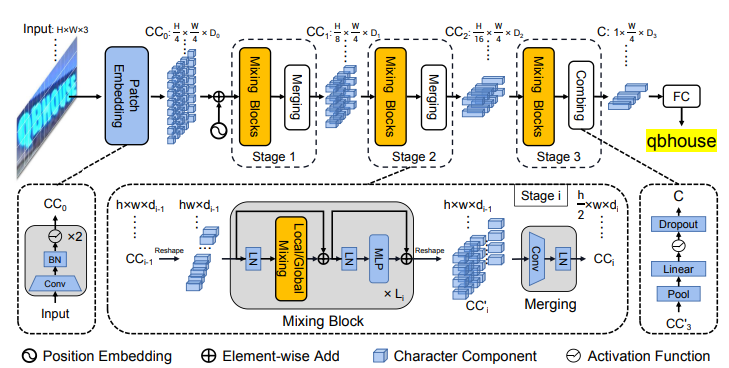
Figure 2: Overall architecture of the proposed SVTR. It is a three-stage height progressively decreased network. In each stage, a series of mixing blocks are carried out and followed by a merging or combining operation. At last, the recognition is conducted by a linear prediction.
Progressive Overlapping Patch Embedding
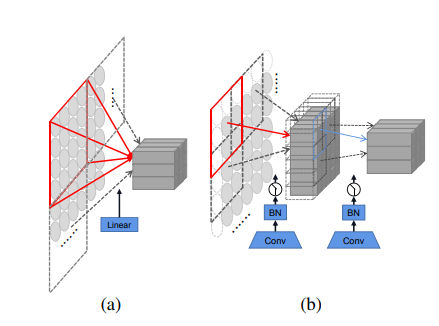
Figure 3: (a) The linear projection in ViT [Dosovitskiy et al., 2021]. (b) Our progressive overlapping patch embedding.
- There exists two common one-step projections for this purpose, i.e., a 4×4 disjoint linear projection (see Figure 3(a)) and a 7 × 7 convolution with stride 4.
- Alternatively, we implement the patch embedding by using two consecutive 3 × 3 convolutions with stride 2 and batch normalization, as shown in Figure 3(b).
- The scheme, despite increasing the computational cost a little, adds the feature dimension progressively which is in favor of feature fusion.
Mixing Block

Figure 4: Illustration of (a) global mixing and (b) local mixing.
-
Since two characters may differ slightly, text recognition heavily relies on features at character component level.
-
We argue that text recognition requires two kinds of features:
- The first is local component patterns such as the stroke-like feature. It encodes the morphology feature and correlation between different parts of a character.
- The second is intercharacter dependence such as the correlation between different characters or between text and non-text components.
-
Therefore, we devise two mixing blocks to perceive the correlation by using self-attention with different reception fields.
Merging
- It is computational expensive to maintain a constant spatial resolution across stages, which also leads to redundant representation.
- we employ a convolution with stride in the height dimension and in the width dimension, followed by a layer norm, generating an embedding of size .
- The merging operation halve the height while keep a constant width. It not only reduce the computational cost, but also build a text-customized hierarchical structure.
Combining and Prediction
- It pools the height dimension to at first, followed by a fully-connected layer, non-linear activation and dropout.
- By doing this, character components are further compressed to a feature sequence, where each element is represented by a feature of length .
- Compared to the merging operation, the combining operation can avoid applying convolution to an embedding whose size is very small in one dimension, e.g., with in height.
Experiments
The Effectiveness of Patch Embedding
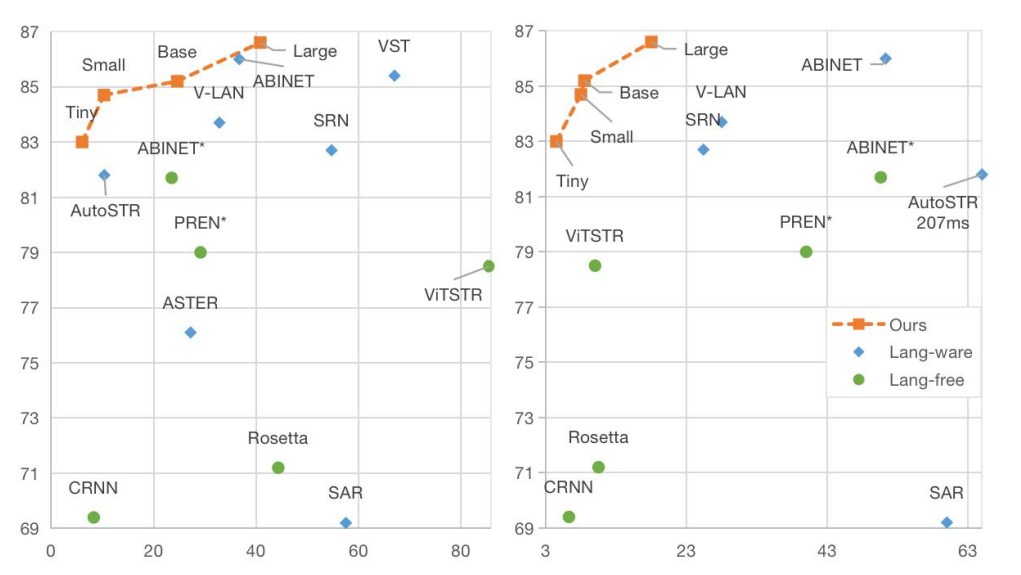
Figure 5: Accuracy-parameter (M) and Accuracy-speed (ms) plots of different models on IC15.
Comparison with State-of-the-Art
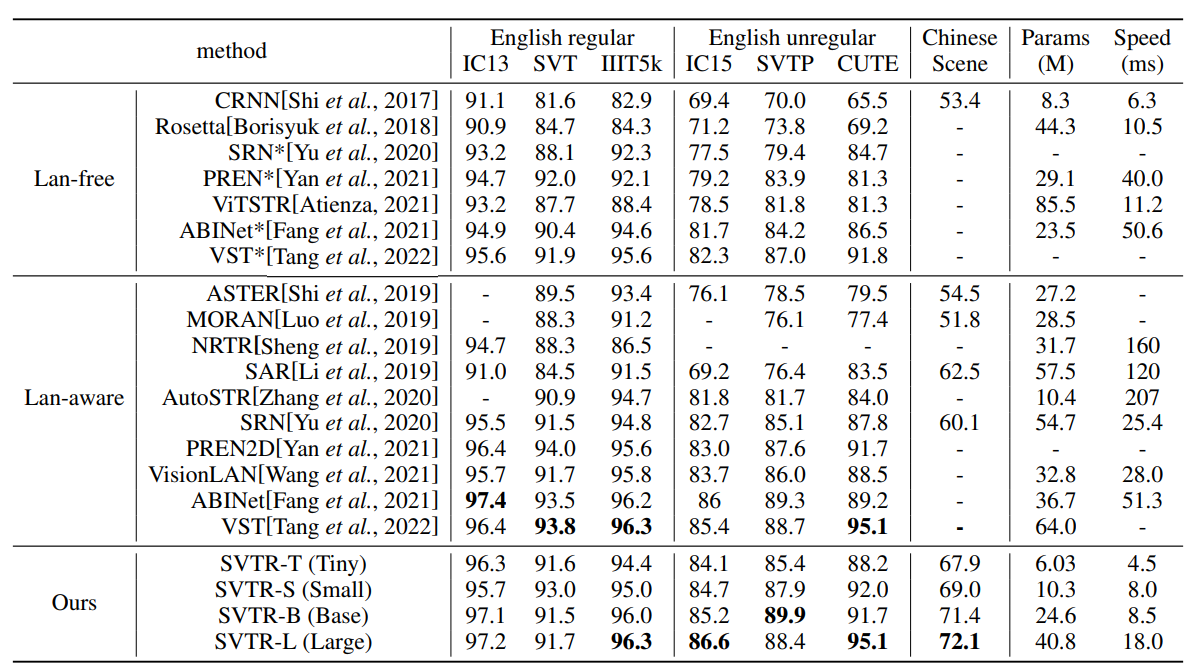
Table 4: Results on six English and one Chinese benchmarks tested against existing methods, where CRNN and Rosetta are from the reproduction of CombBest [Baek et al., 2019]. Lan means language and * means the language-free version of the corresponding method. The speed is the inference time on one NVIDIA 1080Ti GPU averaged over 3000 English image text.
